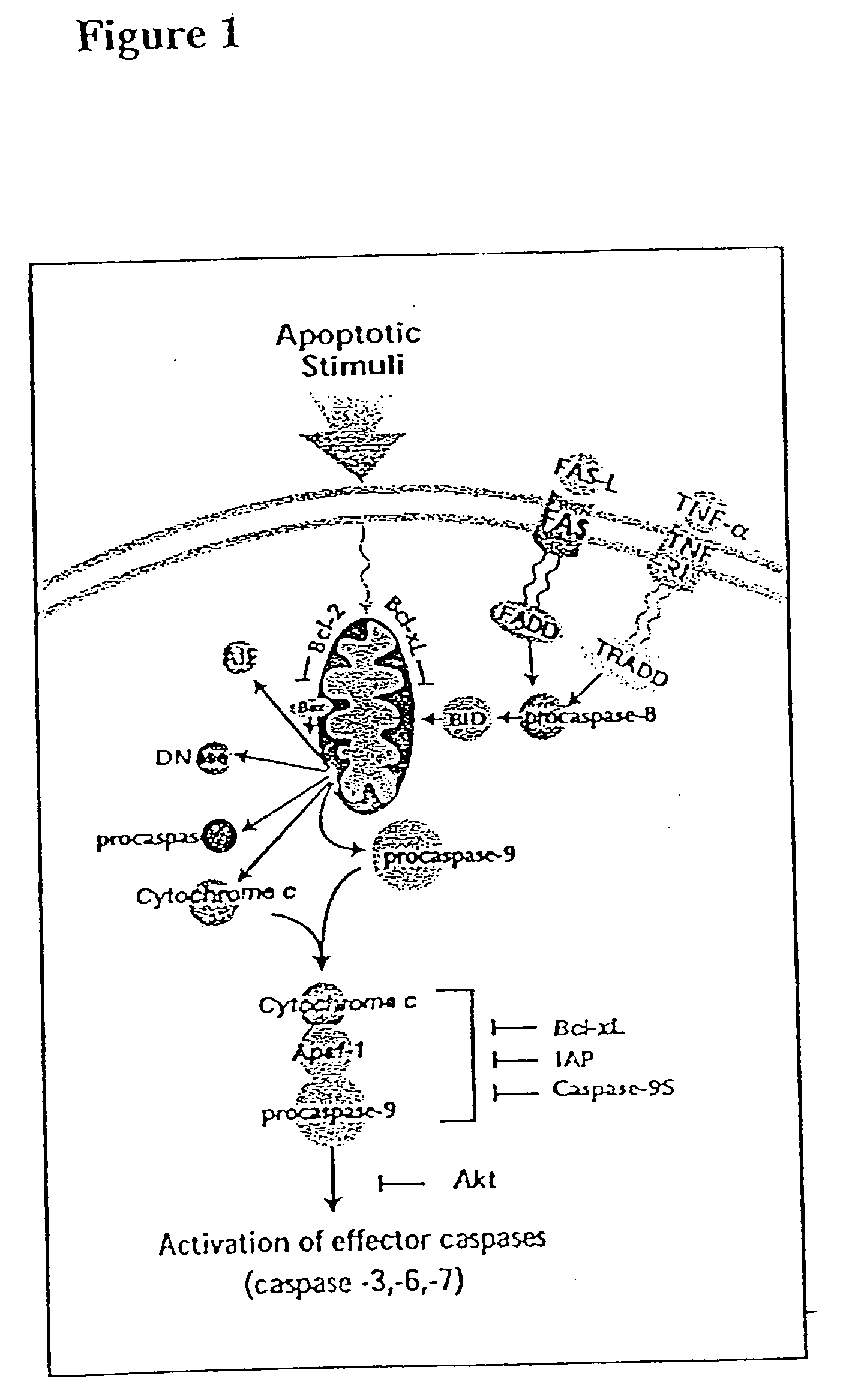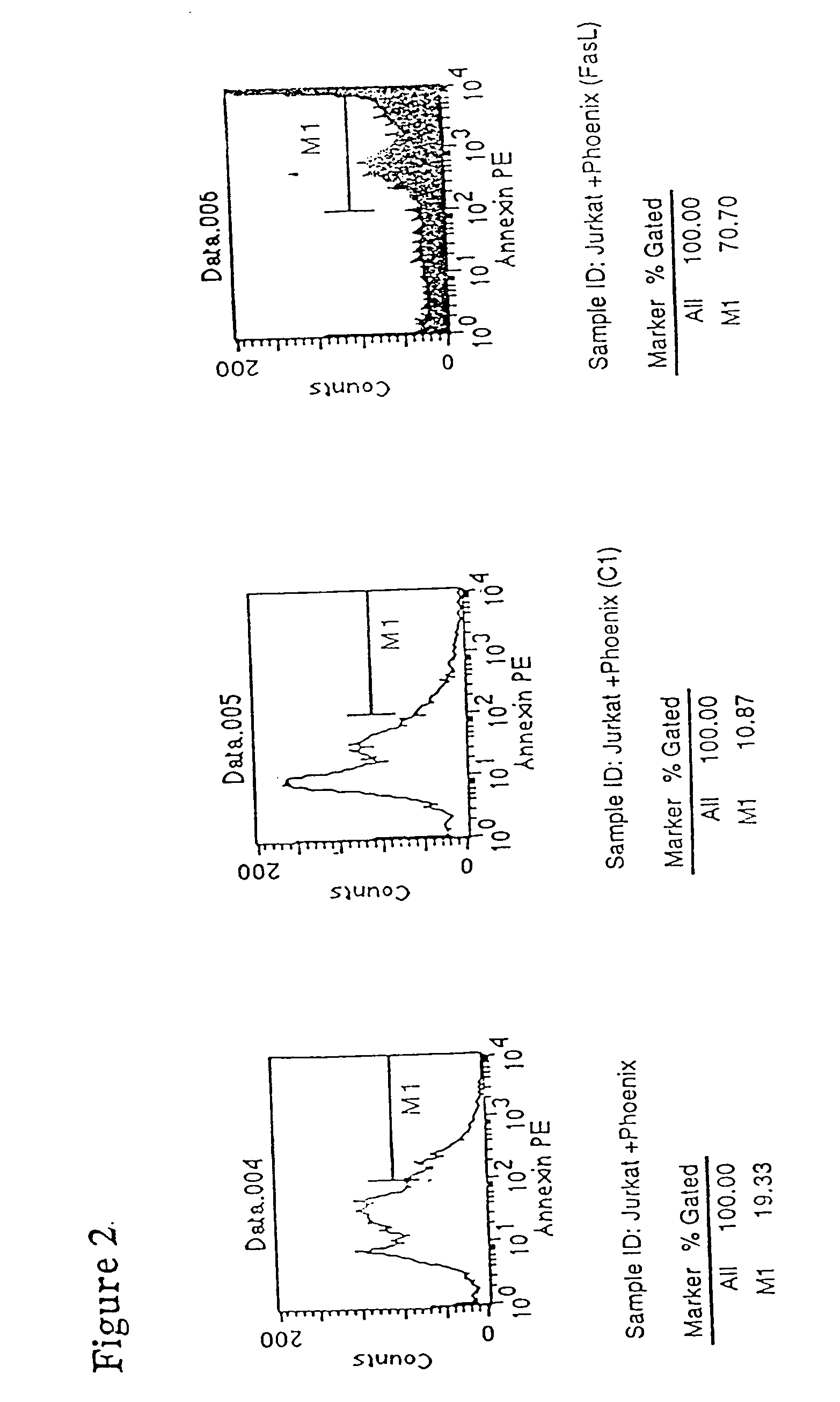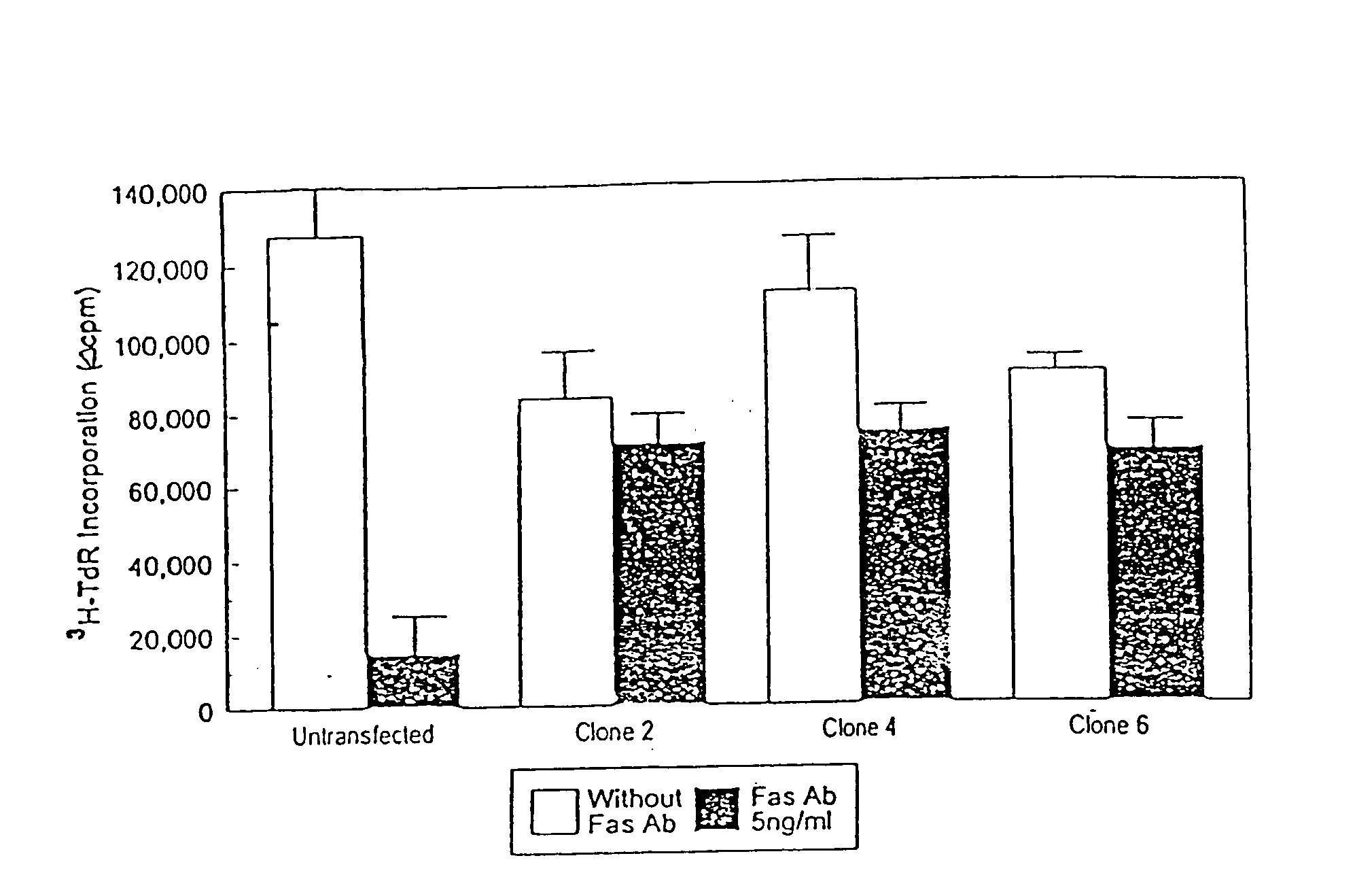Fas ligand expressing hematopoietic cells for transplantation
a technology of hematopoietic cells and ligands, which is applied in the field of ligands expressing hematopoietic cells for transplantation, can solve the problems of loss of biological functioning or the death of the transplanted organ, kidney and liver toxicity, and hypertension, and achieve the effect of suppressing the immune response of the recipient mammal and suppressing the immune response of the recipien
- Summary
- Abstract
- Description
- Claims
- Application Information
AI Technical Summary
Benefits of technology
Problems solved by technology
Method used
Image
Examples
second embodiment
[0054] In a second embodiment, the invention provides means to selectively reduce a host's capacity to reject transplants of allogencic solid organs (including cells and tissue from these organs and also pluripotent stem cells capable of developing into a variety of tissues and organs), such as kidney, pancreas, heart, liver, lung, and brain. Immunity against donor histocompatibility (rejection) antigens is reduced specifically by administration of FasL+ DC and / or HSC from the organ donor (or from someone with the same, or some of the same, histocompatibility antigens as the donor). This application of the invention may also be applied to xenotransplantation.
third embodiment
[0055] In a third embodiment, the invention provides means to selectively reduce the host's capacity to reject autologous cells that have been modified by an introduced or heterologous gene. In therapies for certain genetic diseases caused by a mutant form of a key gene, a wild-type (non-mutant) form of the gene is introduced into the host. One problem which reduces the efficacy of such gene therapy is that the patient may mount an immune response against the wild-type protein or some other component of the vector--both of which the patient's immune system may see as "non-self". Accordingly, the instant invention may be applied to this problem of autologous cell gene therapy by introducing an heterologous FasL gene into the genetically engineered autologous cell. This aspect of the invention to prevent host immune rejection of gene-transduced donor cells may be used in xenotransplantation or in combination with methods for reducing or preventing FasL-mediated allogeneic immunity.
[00...
example 1
Manipulation of the Fas Pathway to Control Hematopoietic Graft Rejection
[0320] Upon FasL binding, cellular Fas oligomerizes and a cytoplasmic domain in Fas binds to FADD (Fas associated death domain), which triggers caspase-mediated apoptosis (see FIG. 1 and Green and Ware (1997) Proc Natl Acad Sci USA 94: 5986-90). The Fas pathway is important in regulating the immune response; for example, organ allograft rejection can be suppressed by FasL.sup.+ DC (see Min et al. (2000) J Immunol 164: 161-7). Activation upregulates Fas on T cells, targeting them for activation-induced apoptosis upon exposure to FasL (see Griffith & Ferguson (1997) Immunol Today 18: 240-44).
[0321] Experimental Approach
[0322] Using RV vectors, either DC or HSC cells are modified to express high FasL levels. FasL.sup.+ DC produce short-term donor cell tolerance, but not necessarily sufficiently potent or long-lasting donor cell tolerance to prevent rejection of the graft in the long term. Accordingly, a second appr...
PUM
| Property | Measurement | Unit |
|---|---|---|
| temperature | aaaaa | aaaaa |
| temperature | aaaaa | aaaaa |
| temperature | aaaaa | aaaaa |
Abstract
Description
Claims
Application Information
 Login to View More
Login to View More - R&D
- Intellectual Property
- Life Sciences
- Materials
- Tech Scout
- Unparalleled Data Quality
- Higher Quality Content
- 60% Fewer Hallucinations
Browse by: Latest US Patents, China's latest patents, Technical Efficacy Thesaurus, Application Domain, Technology Topic, Popular Technical Reports.
© 2025 PatSnap. All rights reserved.Legal|Privacy policy|Modern Slavery Act Transparency Statement|Sitemap|About US| Contact US: help@patsnap.com



